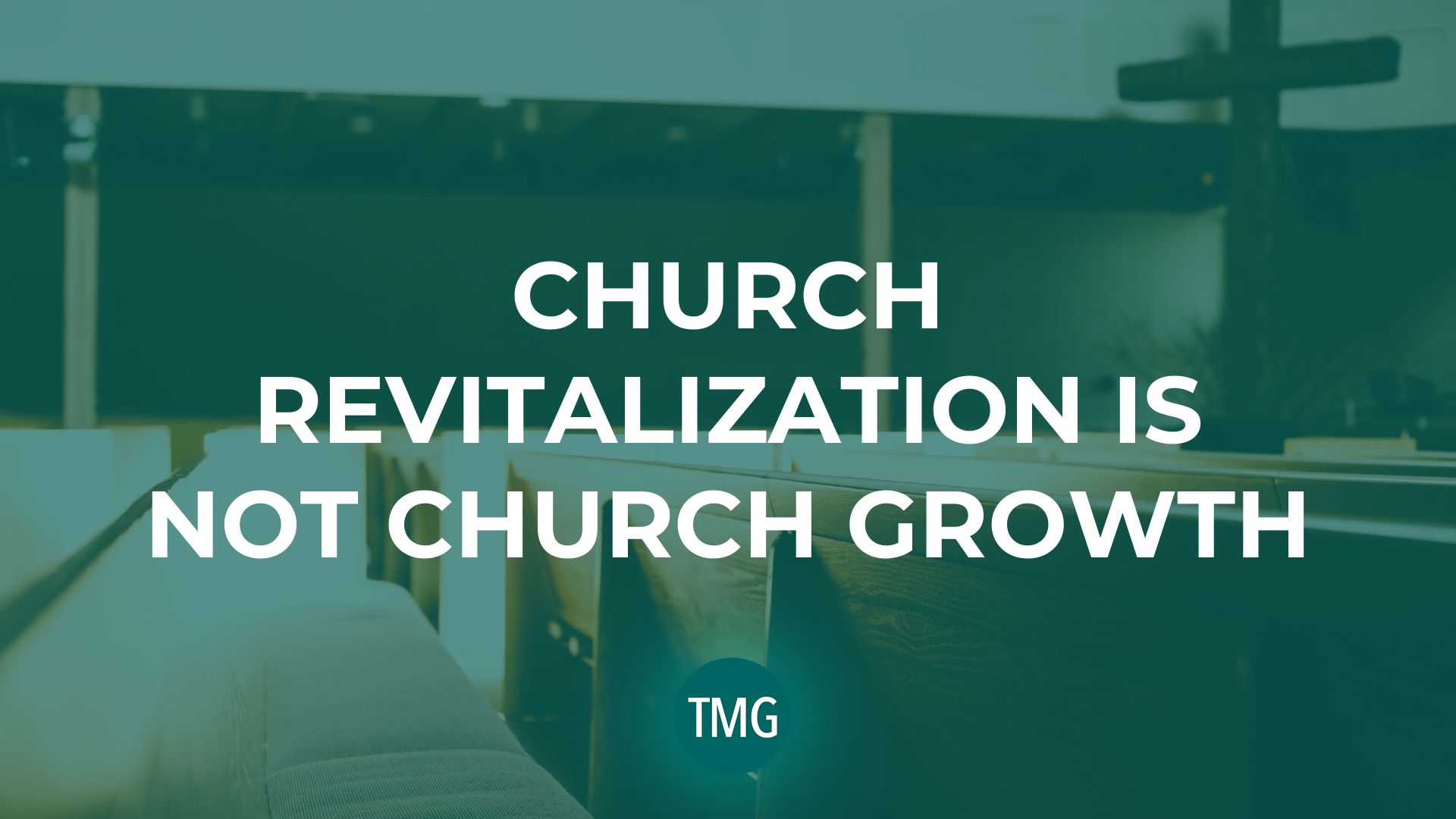Contrary to what some believe, church revitalization is not the same as church growth.
Yes, the church may (and should) grow under your leadership during a revitalization endeavor; however, the numerical growth of a church does not mean it is revitalized or healthy. Any legitimate church consulting group can tell you that pretty quickly.
Church revitalization is a process of spiritual renewal towards church health among an existing people. When you grow a church numerically and do not address the previous culture that caused the decline, this only shows you know how to gather people.
Many times a sheep swapping methodology comes into play, where a leader knows how to grow a church, but does not know how to change its culture. And honestly, this methodology does not always honor God. The leader thinks that running off the bad sheep is acceptable for the “future health of the church.”
Jesus called us to bring about life transformation — even in the bad sheep.
Look at the disciples Jesus chose. Culturally, a tax collector was seen as a traitor and a thief, yet Jesus chose to disciple one to look more like Him. Is this not the model we are called to follow? A church leader must also spend time with the bad sheep and work with them to bring about life change. At this point, we begin to see real church revitalization.
The leader should first look at what caused the decline in the first place, and then ask these critical questions that address why church revitalization is not church growth.
1. Have Systems and Structures Been Developed to Ensure Decline Does Not Happen Again?
This is where longevity comes in, and succession planning is understood. If God calls you away to another assignment, will the church be able to function and grow in your absence? Growing the church numerically may look good for a season but a decline/plateau after your departure only underscores the fact that church revitalization is not church growth.
2. Has There Been a Culture Shift in the Mindset of the Congregants?
A culture must be created to ensure the church will not revert back to the way it was. Revitalization requires more than simply being a leader who can grow a church numerically (a sign but not a guaranteed indicator of turnaround pastors). While this is necessary, the leader must also create a culture shift, so that the people who make up this local body of believers are not the same as when you started. More people? YES! But the people who started the process are also different and look more like Christ.
3. Are New Members Welcomed and Integrated Into the Congregation?
Do the existing congregants truly experience life with the new additions? Is there genuine, biblical community? The church body should make newcomers feel welcome and a part of the family. If this doesn’t happen, the church will not succeed.
4. Are Ministries Beginning to Ignite?
Again, church revitalization does not equal church growth. It is more than just increased numbers showing up for a worship service. During revitalization, existing ministries begin to flourish, some ministries are ended and new ministries are launched.
5. Is the Church More Focused on the Great Commission?
Biblical growth begins to occur as lives are changed. Salvations and the baptisms of adults increase. The community experiences the impact of the church. Families are brought into the fold and provided for. The church reaches beyond itself and impacts those around it for God’s glory.
This is not an exhaustive list of questions and thoughts; however, it does address the beginning differences of growing a church and truly experiencing a church turnaround.
Those who have studied revitalization for any length of time know it takes about 3-5 years for a church to experience a true turnaround. These years should be spent with focused intentionality on creating a culture within the congregation that flows from Biblical discipleship. When the pastors or church leaders create this environment, we can then define the church as a healthy church and/or one being revitalized! That, my friends, is why church revitalization is not the same as church growth.
Kenneth Priest serves as the Director of Convention Strategies for the Southern Baptists of Texas Convention in Grapevine, TX. Kenneth has been leading church revitalization endeavors since 2008 with the SBTC. He holds a Doctor of Educational Ministry with an emphasis in Church Revitalization from Midwestern Baptist Theological Seminary, Kansas City, MO.
@kwpriest || http://sbtexas.com/revitalization

